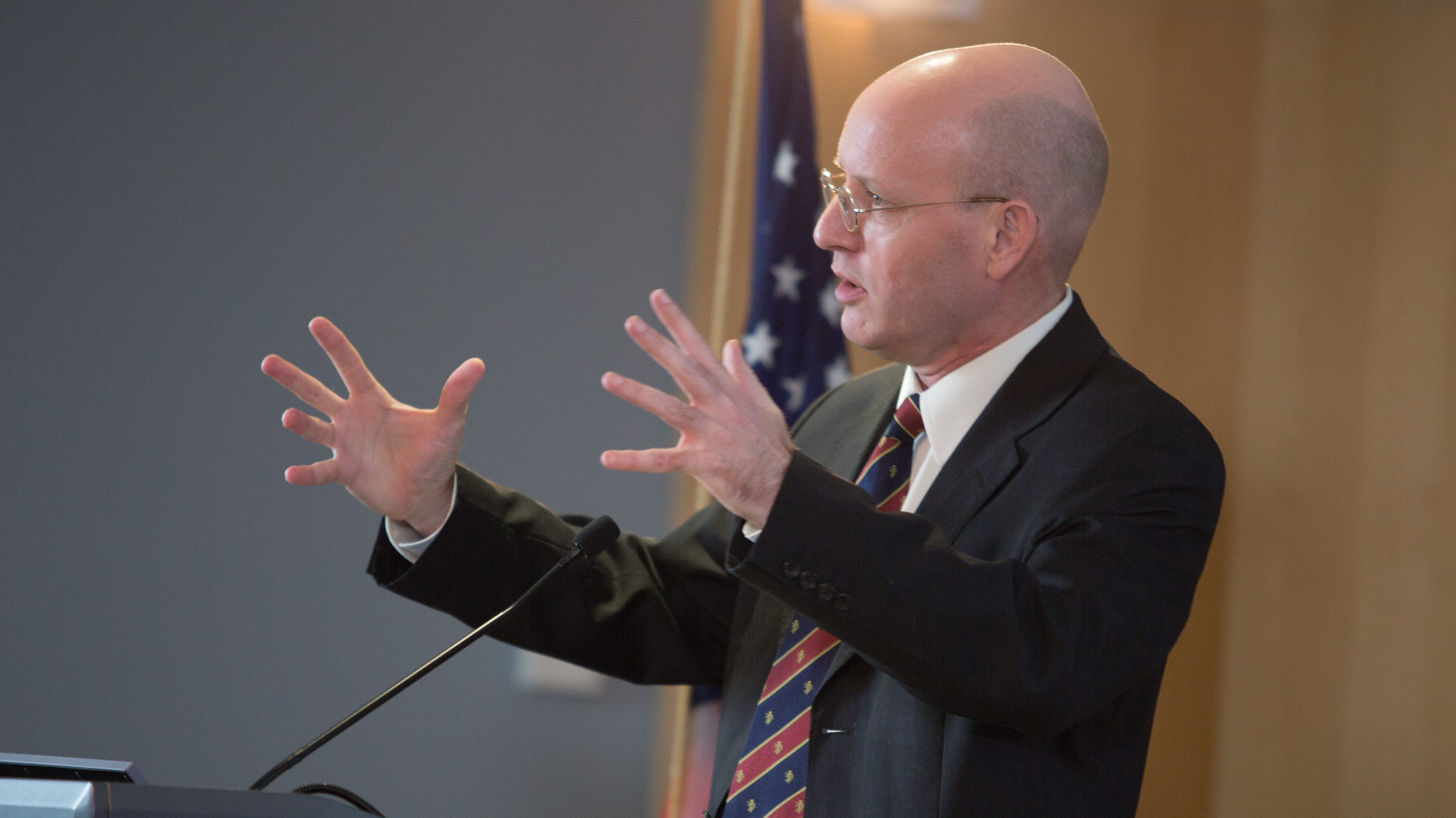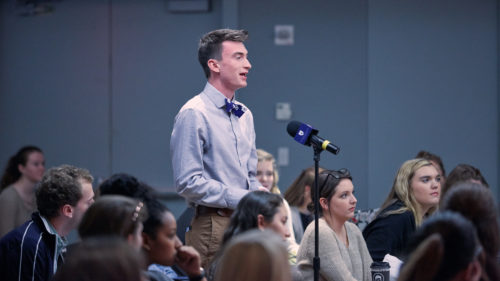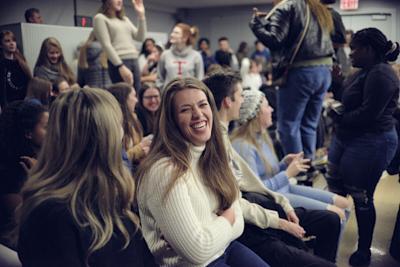Dr. Michael Ward and Dr. Joseph Loconte Discuss the Great War’s Influence on Lewis and Tolkien
On March 19, Dr. Michael Ward and Dr. Joseph Loconte discussed the Great War’s influence on the writings of C.S. Lewis and J.R.R. Tolkien.

On March 12, Dr. Michael Ward and Dr. Joseph Loconte discussed the Great War’s influence on the writings of C.S. Lewis and J.R.R. Tolkien to a standing-room only audience of students, faculty, King’s alumni, and other guests.
Ward is a senior research fellow at Blackfriars Hall, University of Oxford, and the author of Planet Narnia: The Seven Heavens in the Imagination of C.S. Lewis; Loconte is an associate professor of history at King’s and the author of A Hobbit, a Wardrobe, and a Great War: How J.R.R. Tolkien and C.S. Lewis Rediscovered Faith, Friendship, and Heroism in the Cataclysm Of 1914-18 (with a forthcoming documentary mini-series on the same topic).
WATCH: The King’s College Presents: A Hobbit, A Wardrobe, and a Great War, the trailer for Loconte’s documentary series.
Ward delivered a half-hour lecture where he described the Great War’s impact on Lewis’s theodicy. Lewis was nearly killed in World War I at Arras, France when a shell came directly toward him and landed in his trench. “This is a picture of a man dying,” he thought to himself, sure that this was his end. The shell killed his neighbor but Lewis survived, carrying shrapnel in his body the rest of his life.
Despite the horrors of the war, Lewis came to believe that God had a redemptive purpose for history, in large part through his friendship with Tolkien and his conversion to Christianity. During World War II, Lewis delivered talks to Royal Air Force pilots “whose life expectancy was measured in months or weeks.” He had credibility to them because his beliefs were “forged in a furnace.”
Ward contended that there is an underlying imaginative structure in the Narnia books, mirroring Lewis’s belief that behind the despair of war, “in the secret counsels of the divine authority, there may be another story.” This structure, Ward said, is based on the seven heavens of the medieval cosmos: Moon, Mercury, Venus, Sun, Mars, Jupiter, and Saturn. Even beyond the Chronicles, the pre-Copernican view of the world was important to Lewis. There are references to this structure in Lewis’s personal notes in his copy of Chaucer’s Canterbury Tales and multiple mentions to the heavens in The Discarded Image.
As an example of the planetary structure in the Chronicles, Ward centered on the Roman god of war Mars, the namesake for the month of March and the “subliminal” influence in Prince Caspian. The Pevensie children discover weapons in the armory at Cair Paravel; the boys are transformed into knights through the course of the story; the mouse Reepicheep is described as “martial.”
After Ward’s presentation concluded, Loconte and Ward invited the audience to contribute questions to the conversation. On the topic of chivalry within Prince Caspian, Loconte and Ward contrasted the Telmarines’ cowardly self-indulgence with the nag and werewolf’s eager cruelty. Peter, Edmund, and Reepicheep serve to “restrain those two elements from flying apart to the edges.” They are knights who are willing to risk their lives but disciplined enough “not to go a hair’s breadth further.”
Another audience member asked who the new poets of war might be, today’s Robert Graves, Siegfried Sassoon, and Wilfred Owen. Though no contemporary poets came to mind, Ward cited filmmaker Steven Spielberg’s Schindler’s List and Saving Private Ryan, which both communicate a sense of “the gravestone being honored.”
“Lewis was nearly killed in one World War, and he spoke to those who would go die in another,” Ward said. Lewis’s faith had to endure the hiddenness of God, Ward said, referencing Isaiah 45:15: “Truly thou art a God who hideth thyself.” In turn, this theology shaped the imagination of The Chronicles of Narnia.




